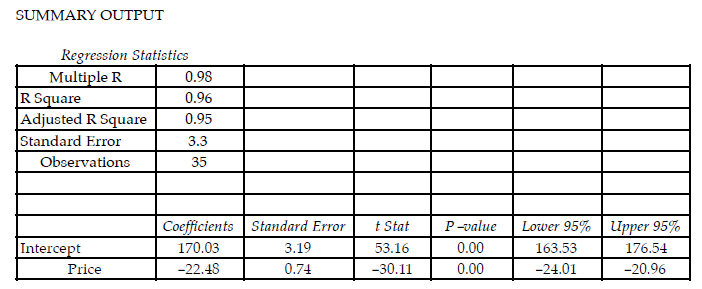Using Excel, the manager of Quick Breaks Coffees has estimated the daily demand function for its regular coffees; the results are shown in the table above. Which of the following statements is correct?

A) The 99 percent critical value exceeds the t-statistic for the estimated slope coefficient.
B) The manager can be 99 percent confident that the price of coffees affects the quantity demanded.
C) The manager can be 99 percent confident that the true slope coefficient for price is equal to zero.
D) The 95 percent critical value exceeds the t-statistic for the estimated slope coefficient.
B) The manager can be 99 percent confident that the price of coffees affects the quantity demanded.
You might also like to view...
__________ is an exchange of products in which a person trades one type of product for another type of product
a. Barter b. Balanced reciprocity c. Negative reciprocity d. Trade
According to the Castles and Miller reading (from the Age of Migration, assigned for the Causes of Migration class), the historical-structural approach is the most comprehensive theory about the causes of international migration
a. true b. false
In Uruk, about 5,100 years ago, the reed stylus was used to make:
a. monosyllabic markings b. monosyllabic letters c. polysyllabic markings d. polysyllabic letters
How does the earliest anthropological definition of culture by Edward Tylor differ from the definitions frequently used today?
a. Tylor’s definition is more like a “laundry list” of attributes that together form a culture. b. Definitions today tend to be more specialized and detailed about characteristics of culture. c. Definitions of culture are no longer being formulated. Anthropology has a single significant definition of culture that all researchers use. d. Culture was more evident in the time of Tylor and his definition includes details that are no longer relevant to the study of culture. e. Tylor’s definition is the only definition still in use today.